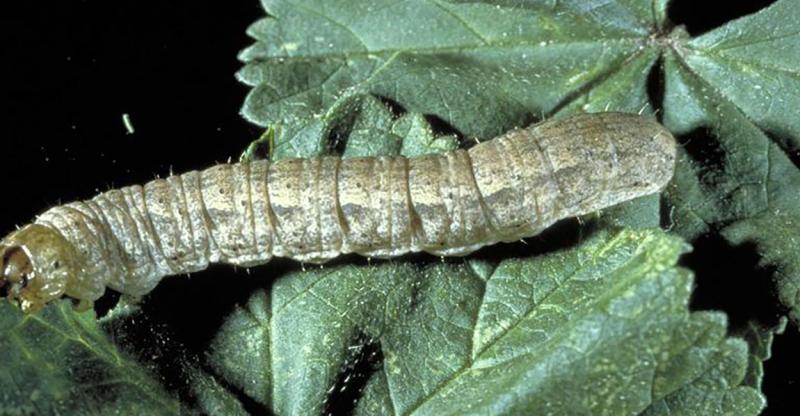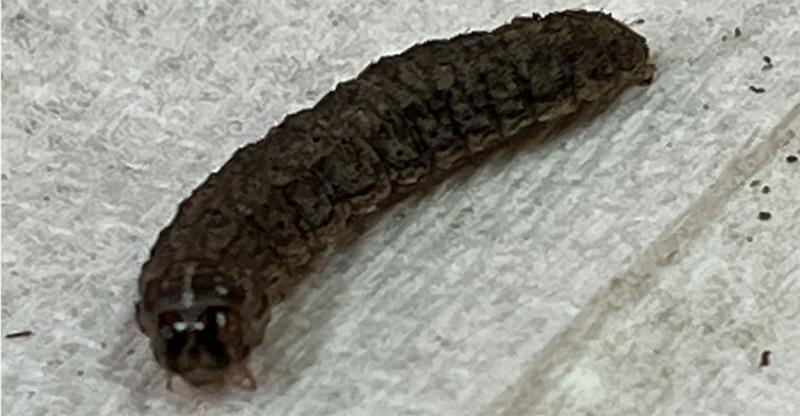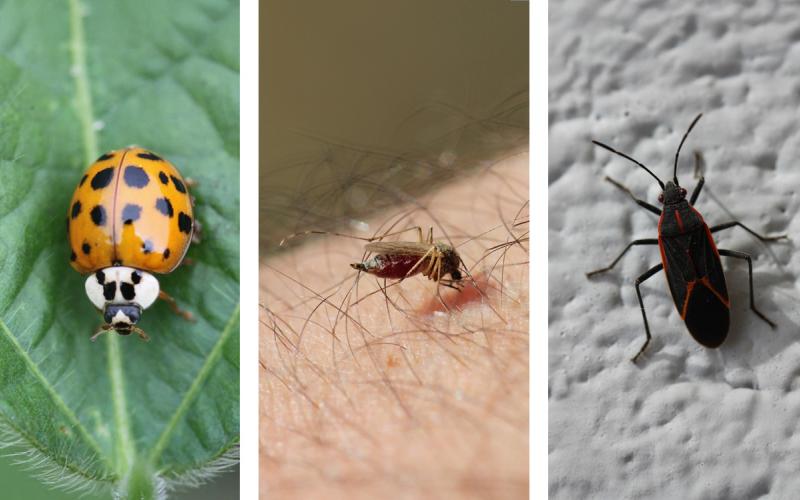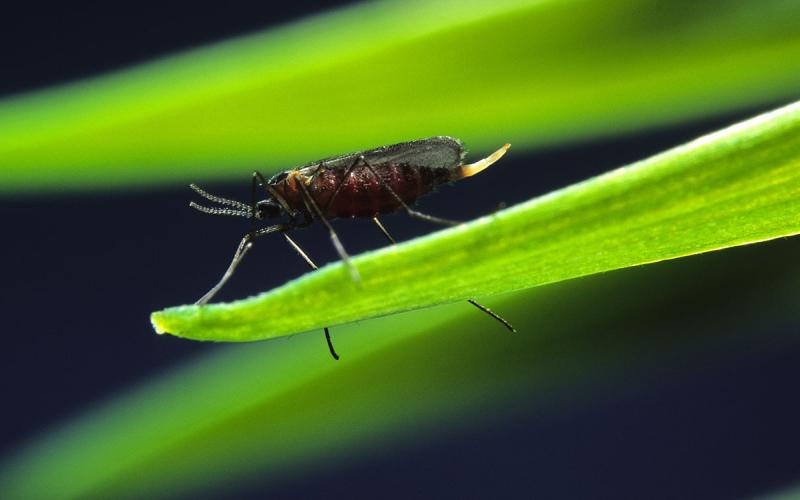
Written with contributions by Shelby Pritchard, former SDSU Extension Pest Management Specialist.
Originally Submitted: June 9, 2022
Dingy cutworms have been reported in South Dakota crops, and their activity is likely to continue for at least another couple of weeks.
Although they are not normally a major pest, dingy cutworms will often defoliate corn, soybean and wheat leaves, and they can cause significant stand reductions by cutting plants (Figure 1, Figure 2). Dingy cutworms are often more abundant in no-till fields with high residue present.
Identification

Dingy cutworm caterpillars are nocturnal and can be found by digging 1-2 inches in the soil around cut plants or defoliated plants. They get their name due to their dull, brown-to-gray coloration. These cutworms have a distinct pale, gray line that runs down the center of their bodies.
The dingy cutworm caterpillars have spots (tubercles) present on the sides of each body segment that are all similar in size to one another (Figure 3). They also have two dark lines on their brown head capsule (Figure 4).
Scouting and Management

Cutworms tend to be more of an issue in fields that have been planted under reduced or no-tillage practices, fair to poorly drained fields, or fields with weed or cover crop presence prior to planting. Cutworms can be scouted by examining fields for cut plants and by digging in the soil near cut plants to determine population densities.
To scout for cut plants, examine 20 consecutive plants in five locations throughout the field (100 plants per field). In addition to looking for cut plants, also examine plants for signs of defoliation, as younger cutworm caterpillars may be incapable of cutting the plant. In areas where cut plants are observed, dig in the soil within the row to find any caterpillars that may be present.

Insecticide management should be considered if 20% or more of the scouted plants are cut and the caterpillars are less than 3/4 of an inch or shorter in length. Caterpillars this size will continue to feed on plants and may further reduce stands. Please refer to the current edition of SDSU Extension’s South Dakota Pest Management Guides for Soybean, Wheat and Corn for a list of insecticides labeled for the management of dingy cutworms.


